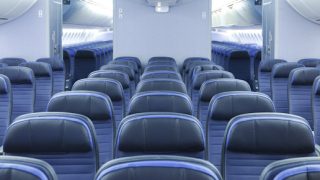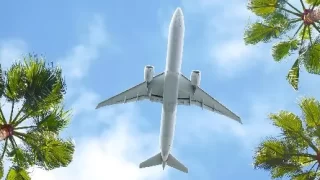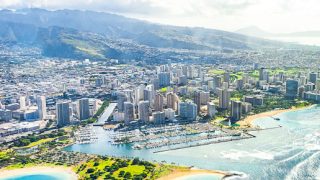The frustrations of Hawaii-bound travelers like Sam, who just shared his experience booking flights to Hawaii with us, are all too common. Sam said, “Every time we check on flights on the airlines, they seem to Jack up the prices…why is that? The prices increased by 10, 25, sometimes 50% more! Then after we try to select our seats, the chart shows all full, then when we finally board the aircraft we find many seats empty! Why is that? Scam screams out…!
This year alone, there have been multiple accusations of airlines employing various forms of bait and switch. One such accusation is against American Airlines, for listing basic economy airfare under the main cabin pricing that can cause confusion in sorting out the cost/benefit analysis. As a group, airlines are under pressure to stop drip pricing, in which they show initial fares, before adding baggage and seat selection fees. And there’s ongoing controversy about airlines manipulating their point systems too, in order to inflate award travel costs, and reduce availability, thus reducing the value of their loyalty programs for customers.
These ongoing issues point to a lack of airline pricing transparency and consumer frustration regarding perceived bait-and-switch tactics.
What’s the reality behind the airlines’ pricing practices, and are these tactics deliberate or a consequence of modern pricing methodology?
Airlines use slick dynamic pricing to catch us by constantly adjusting airfares.
Prices are based on demand, competition, and other factors. Prices change very rapidly, often many times a day, even while you are in the midst of purchasing.
“We too have had the same experience on United, for example, when going through the purchase process only to be told on the final payment click that the price offered is no longer available. Only a higher one. Grrr!”
Beat of Hawaii
Factors influencing price changes can also include any number of other variables, both known and unknown, including the number of searches for a particular flight, booking patterns, time of day, seasonality, and upcoming holidays or events.
Airlines deploy psychological pricing tactics too.
Creative pricing and how it’s displayed can create urgency when showing limited-time offers or highlighting a limited number of seats available to encourage immediate booking and avoid the industry’s dreaded “cart abandonment.” We’ve experienced this on Southwest Airlines and Hawaiian Airlines, as just two examples.
Seat map confusion.
The reality of finding empty seats on the plane when boarding despite the appearance of no availability when booking can be attributed to several factors, including last-minute cancellations, upgrades, and unsold premium seats that are later discounted. Or is it something more?
Airlines’ obfuscation on regulation and transparency.
The industry has long been criticized for its lack of transparency regarding pricing and fees. This issue has prompted action from the federal government, but progress remains slow due to significant but not surprising push-back from the airlines.
Federal initiatives and industry resistance.
The federal government has been seeking greater transparency in airline pricing, aiming to protect consumers from “junk fees” too. The U.S. DOT proposed rules to require airlines to clearly disclose all fees upfront during the booking process. However, airlines resist these changes, arguing that such regulations exceed the DOT’s authority and could confuse customers. Really?
For now, U.S. airlines have been successful in their challenges. They claimed that additional disclosures would impose undue burdens and potentially harm their competitive edge. This legal back and forth highlights the airlines’ desire to maintain flexibility in pricing and fee structures, often at the expense of clarity for their customers.
Implications for Hawaii travelers.
For Hawaii travelers, this means navigating a complex landscape where the total cost of air travel is not always immediately apparent. Despite government efforts to enhance transparency, ongoing legal battles and industry resistance suggest that significant changes may not occur soon.
Addressing Sam’s concerns and what we can do.
Certainly the airlines should improve transparency by providing clearer explanations of how pricing works and offering tools to help consumers track fare changes. But that isn’t the case and may not be for a long time. Airlines remain don’t wish to have their hands tied in their marketing efforts. Tips to ourselves and to you include:
Use fare alert tools: These tools and apps track fare fluctuations and alert users to price drops. We use Google Flights.
Be flexible: Travelers should check prices across a range of dates and airlines to identify the most affordable options. Whether paying cash or using points, changing dates can make an eormous difference.
Read “Unraveling Hawaii Airfare Secrets: Inside Dynamic Pricing” to better understand these issues.
We welcome your input!
Get Breaking Hawaii Travel News






Alaska Airlines’, “bait and switch,” is their SAN (San Diego) to LIH (Lihue) non stop that is promoted every Fall. Buy the ticket for the departure date and seat selection, they (the airline) cancel that flight without notification and may (or may not) reschedule you on another flight, day and/or departure location. Every year including this year when they reduced the number of departures from SAN to just two each week. Their solution? SAN to SEA/TAC to LIH with a long layover in SEA/TAC for a whopping 14 hour flight time!
That’s why you always look and book flights in incognito mode. Really not that hard of a concept. They keep track of your cookies and browsing history if you don’t
I am told by tech people that Incognito does not prevent the airline from knowing who you are.
How do you do that?
The lack of transparency inpricing from tickets, to seats, and bags is confusing and disappointing and makes it hard to us to budget for a family trip.
Tried to use my AA points for Hawaii, only to find very few available options or super inflated point requirements. It feels like these programs have mostly become just marketing gimmicks.
Booked a United flight to Honolulu. The advertised fare didn’t mention the fee for seat selection and at first glance didn’t realize it was basic economy. Felt like a bait-and-switch
Delta’s pricing games are infuriating. I refreshed the page, and the fare went up $50 in seconds. Why is it so hard to book confidently?
We have had our flights to and from Hawai’i on Delta repeatedly changed with no notice because they used Hawaiian Airlines flights to connect us to our destinations. Once Hawaiian makes a change (which is frequent), the Delta fights get shuffled, and always for the worst.
Last year we had Delta One seats on a direct flight from Honolulu to Salt Lake City. It’s a good thing we obsessively look at our Delta app because they switched us to the dreaded HNL>LAX>SLC flights all because the leg on Hawaiian from Kona to HNL was changed.
It took me a good 45 minutes on the phone and two supervisors later to get us back to what we originally had.
Although many readers and BoH editors probably won’t agree with this, but leave government regulation out of it. Let the free market work. Government just muddies up the process and as stated in this article, the airlines will always find a way, a passenger unfriendly way, to circumvent the rules. Just like all other businesses, airlines are a for-profit business and competition between the airlines levels the playing field for them and their passengers. Government should only oversee the safety of air travel.
I agree. Let the market decide who makes it and who doesn’t, until the monopolization of the airline industry begins (some could argue it did a few decades ago) at which time the government will start snooping. I do not, however, like the way the airlines play the games they do regarding dynamic pricing.
Aloha,
Loosely related, but pertinent nonetheless, I believe that airline consumers have a right to know what type of aircraft they are flying on. Sometimes there are unavoidable substitutions, but generally a certain type of aircraft is scheduled for a particular route. As a paying customer there are certain types that I prefer for various reasons, seating included.
Mahalo
I have seen several times where on a third party site shows the flight almost sold out or is sold out but when you go directly to the airlines own site the plane is only half full. I have seen this the most with Delta airlines.
I’m old enough the remember the notion of travel agents and they’d just go get arrangements done. That was probably a racket then, too, but now that the internet allows every person on the planet to make their own arrangements, the competition is among ourselves even more.